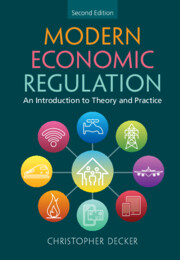Refine search
Actions for selected content:
60 results
Chapter 1 - Maps from Indigenous Territory
-
- Book:
- American Modernism and the Cartographic Imagination
- Published online:
- 09 October 2025
- Print publication:
- 23 October 2025, pp 30-67
-
- Chapter
- Export citation
Quantifying human-centric uncertainty in aircraft maintenance
-
- Journal:
- The Aeronautical Journal , First View
- Published online by Cambridge University Press:
- 29 August 2025, pp. 1-44
-
- Article
- Export citation
The great transatlantic race: physiologic and otoneurologic considerations
-
- Journal:
- The Journal of Laryngology & Otology / Volume 139 / Issue 7 / July 2025
- Published online by Cambridge University Press:
- 25 March 2025, pp. 615-621
- Print publication:
- July 2025
-
- Article
- Export citation
3 - The Rise and Fall of the Great Changemakers
-
- Book:
- The Greatest of All Time
- Published online:
- 23 January 2025
- Print publication:
- 06 March 2025, pp 81-121
-
- Chapter
- Export citation
Turbulent Takeoff—Hard Landing: State-Airline Relations and the Challenges of Early Commercial Aviation in Iran, 1923–1932
-
- Journal:
- Enterprise & Society / Volume 26 / Issue 3 / September 2025
- Published online by Cambridge University Press:
- 15 January 2025, pp. 1085-1111
- Print publication:
- September 2025
-
- Article
-
- You have access
- Open access
- HTML
- Export citation
Chapter 10 - Planning and Environment
-
- Book:
- Wind Turbines
- Published online:
- 24 January 2025
- Print publication:
- 19 December 2024, pp 248-273
-
- Chapter
- Export citation
5 - Pan American Airlines and the Birth of Chinese Air Power
- from Part II - Entanglements of American Empire
-
-
- Book:
- Uneasy Allies
- Published online:
- 12 December 2024
- Print publication:
- 19 December 2024, pp 77-94
-
- Chapter
- Export citation
26 - Semiconductors, Aviation, and Space
- from Part V - Industry Case Studies
-
- Book:
- Industrial Policy for the United States
- Published online:
- 08 November 2024
- Print publication:
- 21 November 2024, pp 508-538
-
- Chapter
- Export citation
Decision-making and risk-taking under uncertainty in safety-critical systems: a study among aviation employees
-
- Journal:
- The Journal of Navigation / Volume 77 / Issue 5-6 / September 2024
- Published online by Cambridge University Press:
- 13 June 2025, pp. 723-735
- Print publication:
- September 2024
-
- Article
- Export citation
Epilogue
-
- Book:
- Citizen Cowboy
- Published online:
- 16 August 2024
- Print publication:
- 29 August 2024, pp 382-393
-
- Chapter
- Export citation
12 - Man in Motion
-
- Book:
- Citizen Cowboy
- Published online:
- 16 August 2024
- Print publication:
- 29 August 2024, pp 317-346
-
- Chapter
- Export citation
Investigation on elastomer behaviour when exposed to conventional and sustainable aviation fuels
- Part of
-
- Journal:
- The Aeronautical Journal / Volume 128 / Issue 1325 / July 2024
- Published online by Cambridge University Press:
- 13 August 2024, pp. 1485-1500
-
- Article
-
- You have access
- Open access
- HTML
- Export citation
Using EEG and eye-tracking as indicators to investigate situation awareness variation during flight monitoring in air traffic control system
-
- Journal:
- The Journal of Navigation / Volume 77 / Issue 4 / July 2024
- Published online by Cambridge University Press:
- 20 February 2025, pp. 485-506
- Print publication:
- July 2024
-
- Article
- Export citation
A novel approach to runway overrun risk assessment using FRAM and flight data monitoring
-
- Journal:
- The Aeronautical Journal / Volume 128 / Issue 1327 / September 2024
- Published online by Cambridge University Press:
- 20 May 2024, pp. 2054-2072
-
- Article
- Export citation
COVID-19 passenger screening to reduce travel risk and translocation of disease
-
- Journal:
- Epidemiology & Infection / Volume 152 / 2024
- Published online by Cambridge University Press:
- 08 February 2024, e36
-
- Article
-
- You have access
- Open access
- HTML
- Export citation
The Transnational Origins of China's Aviation Infrastructure
-
- Journal:
- The China Quarterly / Volume 255 / September 2023
- Published online by Cambridge University Press:
- 20 July 2023, pp. 663-678
- Print publication:
- September 2023
-
- Article
-
- You have access
- Open access
- HTML
- Export citation
Explaining Policy Failure in China
-
- Journal:
- The China Quarterly / Volume 257 / March 2024
- Published online by Cambridge University Press:
- 21 June 2023, pp. 3-19
- Print publication:
- March 2024
-
- Article
-
- You have access
- Open access
- HTML
- Export citation

Modern Economic Regulation
- An Introduction to Theory and Practice
-
- Published online:
- 25 May 2023
- Print publication:
- 08 June 2023
-
- Textbook
- Export citation
7 - Learning
-
- Book:
- Holding Out
- Published online:
- 31 March 2023
- Print publication:
- 20 April 2023, pp 215-244
-
- Chapter
- Export citation
Collision risk quantification for pairs of recorded aircraft trajectories
-
- Journal:
- The Journal of Navigation / Volume 76 / Issue 2-3 / March 2023
- Published online by Cambridge University Press:
- 26 April 2023, pp. 181-199
- Print publication:
- March 2023
-
- Article
-
- You have access
- Open access
- HTML
- Export citation
